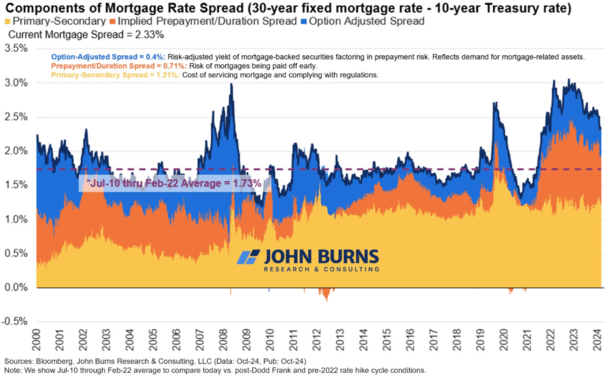Customer retention tools proliferate amid refi boomlet
unitedbrokersinc_m7cmpd2024-10-22T20:22:26+00:00Mortgage companies have long tried to improve upon recapture, which is the act of retaining a borrower whose loan you already service (or originated in the past) for their next origination.That is because of the truism that it is cheaper to keep a current customer than to go out and find a new one.Some entities, including Rocket, acquire mortgage servicing rights as a mechanism to feed their loan production operations.Overall success may be evading lenders, however. ICE Mortgage Technology put out a report noting second-quarter customer retention rates were 20% for all industry lenders, a 17-year low. Nonbanks performed slightly better, at 28%. Those were down from 25% and 34% respectively three months prior.Even though mortgage rates have increased in the past few weeks, the 30-year fixed is still 131 basis points lower than it was at this time in 2023.To help entities that outsource the servicing function, subservicer Loancare has introduced Digital Recapture, which it claims will inform borrowers about potential home equity loan opportunities or lower interest rates to refinance while keeping the servicing rights owner in the picture."We're excited to introduce these retention tools as a significant enhancement to the homeowner digital experience while offering our clients a tactical way to boost engagement and loan origination as a part of their portfolio defense strategy," said Dave Worrall, president of Loancare in a press release. "By providing homeowners with direct access to refinancing options and giving our clients real-time actionable leads, this program underscores our commitment to delivering value at every stage of the mortgage lifecycle," he added.Freedom, which is in the midst of a legal battle with Loancare, has been one of the entities acquiring MSRs, Bose George of Keefe, Bruyette & Woods, said in an Oct. 3 report. He pointed out its correspondent channel, which lenders typically use to build up MSR portfolios, had a 337% increase in volume year-over-year for the first half of 2024."At the same time, meaningful capital continues to come into the market to purchase MSRs driven by companies like Freedom and Rocket that buy higher coupon MSRs in order to refinance loans through recapture," George said. "Finally, Rocket recently highlighted MSR purchases as a new pillar of growth and subsequently announced a subservicing partnership with Annaly, suggesting that Rocket might emerge as a more meaningful subservicing competitor, which could be negative for the big servicers/subservicers."Another firm that has rolled out a refinance lead generation product, albeit aimed at the origination side, is Mobility Market Intelligence.Its offering is called Refinder, and it scans a loan officer's customer database to identify opportunities based on the current note rate."Providing actionable insights from data is our mission," said Ben Teerlink, founder and CEO of MMI, in its press release. "With interest rates trending downward, we want to do everything we can to help our customers be prepared."Meanwhile Total Expert is bringing out a messaging tool that looks to keep lenders in compliance with such regulations as the Telephone Consumer Protection Act.Called Engage SMS, it allows Lenders to segment contacts and automate initial outreach through personalized bulk messages. The system can then help them step into one-on-one conversations if a customer responds."In order to meet rising consumer expectations, it's essential for financial institutions to elevate their communication with customers," Joe Welu, Total Expert CEO, said in a press release. "By infusing the dynamic capabilities of SMS into the Total Expert platform, we are enabling sales and marketing teams to create better customer experiences, deepen relationships, and ultimately win customers for life."


